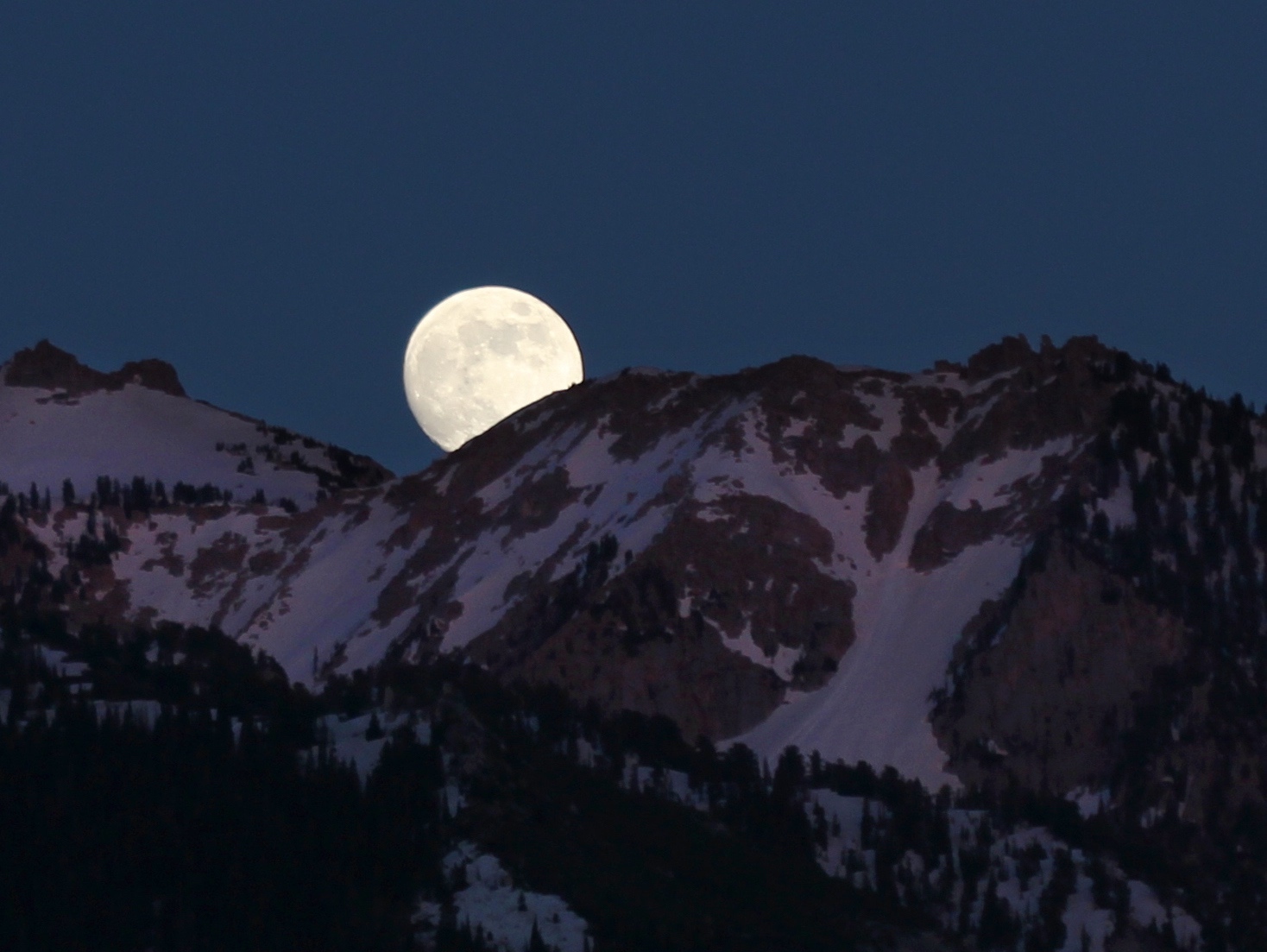The Moon travels around Earth in an elliptical orbit.
Because the orbit is egg-shaped (and not circular, where the distance between the two would always be the same), once a month the Moon is at perigee (closest to the Earth) and once a month it's at apogee (farthest from the Earth).
Sometimes the Sun, Moon and Earth are all in alignment. When Earth is in the middle of the three, we have a "full Moon." When the Moon is in the middle, we have a "new Moon." Scientists refer to the alignment of these three bodies as a "syzygy."
Every now and again, during such an alignment, the Moon is full when it's at perigee (closest to Earth). Scientists call that event a "perigee-syzygy," but most everyone else calls it a "SuperMoon."

The next one is due on April 7-8, 2020 (which will be the biggest full moon of 2020). At that time, the Moon will be closest to Earth (221,851 miles/357,035 kilometers away) compared to its average distance of 238,855 miles/384,400 km).
A stunningly beautiful Super-Moon event occurred on the 19th of March, 2011—the largest and brightest in nearly twenty years. The video clip at the top of this page, narrated by NASA's Dr. Tony Phillips, explains this awesome "perigee moon" in greater detail.
In light of 2011 earthquakes in New Zealand and Japan, many people wondered whether the SuperMoon (and/or increased solar-flare activity) that year had any causal relationship to those events. NOAA provides an answer to that question:
On March 19, 2011, the Moon was at its closest point to Earth in 18 years, an event that is known as a "lunar perigee." Also popularly referred to as the "Supermoon," this is simply a situation in which the moon is slightly closer to Earth in its orbit than on average, and this effect is most noticeable when it occurs at the same time as a full moon.
So, the moon may seem bigger although the difference in its distance from Earth is only a few percent at such times; and this situation has absolutely no relationship to the recent earthquakes, and will not lead to any super or unusually high tides.
As for solar activity, the sun is now entering a new 11-year maximum phase after just coming out of an 11-year less active phase. We know of absolutely no correlation between solar flare activity and the movement of tectonic plates on the earth. The third largest earthquake ever recorded (between 9.1 and 9.3 on the Richter scale) occurred in Indonesia in 2004 during a time of minimum solar activity.
For anyone without too much cloud cover, the "SuperMoon" of March, 2011, was a sight to behold.

Hopefully ... you'll be able to see the next SuperMoon. In April, it's known as a "Super Pink Moon" (not because the Moon is actually pink but because April is known for its gorgeous pink moss—Phlox subulata—which bloom at that time of year).
In April of 2020, when the SuperMoon rises against the backdrop of the Phlox subulata, we will see the brightest Supermoon of the entire year.
Media Credits
Video explanation of March, 2011 "SuperMoon," by NASA. Online, courtesy NASA. In-text photo of a SuperMoon by NASA/Bill Dunford.





